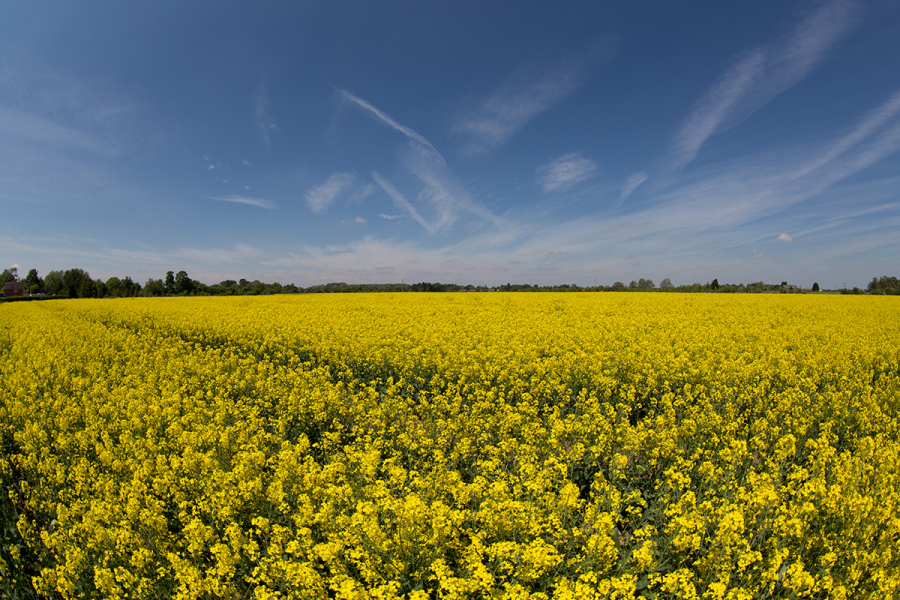Oilseed rape prices are on a high and planting plans for 2023 look to be following the money, but what impact will the high price of inputs have on this? Will the market drop before growers can take full advantage and are other planting plans impacted? CPM explores these issues.
Give yourself some security so that you’re not carrying inputs with unsold grain as the value of grain could fall.
By Melanie Jenkins
It could be argued that it’s been a year of highs of all sorts. High input and output prices, high tensions and high temperatures. But with harvest 2022 in full swing, thoughts are already moving ahead to 2023 and, though many might have bought seed ready to get planting, the weather might make a few reconsider their decision.
Despite the input costs hitting prices not seen before, most farmers don’t plan to alter their cropping plans, according to a survey conducted by Kynetec in May.
“Over 28,000 arable farmers have said they won’t be changing their planting plans,” says Ben Cooper of Kynetec. “This shows a considerable percentage (53%) will continue their rotational plan as normal, regardless of rising input costs.”
And a lot still haven’t decided how input prices will affect their plans. “Nearly 7000 UK arable farmers just don’t know how their planting plans will be impacted by the changes in input price,” adds Ben. “But farmers are considering a range of other cropping strategies for 2023 to combat rising input costs.”
Despite input prices reaching eye-watering heights in the last six months, farmers have also been able to take advantage of strong market prices. But now the markets are feeling a bit of relief from the Black Sea deal and because harvest has now kicked off, explains James Webster of the Andersons Centre. “But there’s still a lot to be seen in terms of North America’s maize supply which underpins the market a bit and we’re not expecting the same levels of output we’ve seen for some time.”

There’s a lot of talk about reducing inputs, says James Webster.
And the markets are also playing a role in planting plans for oilseed rape. Although the survey indicated that around 50% of GB farmers (when weighted up to the total OSR grower population) intend to keep their OSR area the same for 2023, 12% plan to decrease their area, around 23% are actually planning to increase their hectarage. Another 15% were still unsure, explains Ben. “It could be that we see an increase in the OSR area for 2023 based on the 23% of farmers increasing their area.”
Anthony Speight of AHDB believes this may well be the case. Even though OSR area has largely been falling since the highs seen in 2014, due in large to the persistent pest pressures, the recent spike in prices – peaking at levels never seen before – is attracting growers back to the crop. “The results from the survey are quite expected and I’m not surprised by them,” he comments.
Results from AHDB’s harvest 2022 planting survey have shown an increase in OSR cropping at 336,000ha, which is significantly up on last year, says Anthony.
“After a number of years of serious decline in the OSR area due to pest pressures, we’re now seeing an increase as growers have another stab at growing it because of the market outlook. But there’s still a distinct line between those who won’t touch it and those who are attracted by the high prices.”
James is of a similar view. “The planting plans indicated by the first survey follow what we’re expecting. There’s been a lot of interest in growing OSR and so there’s a general assumption there’ll be a rise in area. Or there was, until the last month or so.”
Over the past 12 months, OSR prices have been inflated – hitting over £800/t ex-farm at times, he explains. “European production is forecasts to rise and the Canadian prairies getting some much-needed rain in mid-July meant prices fell dramatically by over £40/t in the course of a week.”
But the price incentive to grow OSR is still there, says Anthony. “I know there are challenges with growing this break crop but if you can offset some of the yield loss with the high price, then it’s an incentive to sow it for harvest 2023.

Anthony Speight stresses that the weather is critical to getting OSR established.
“But what is critical to note is that much will depend on the weather in August,” he stresses. “There needs to be sufficient rainfall so that there’s enough moisture for OSR crops to take off and start growing. And one thing to keep in mind is that over the past few years, when it’s been dry through sowing, crop establishment has been bad.”
Rainfall is essential, agrees James. “Those who are planning to plant OSR will want to go in early or relatively early, and we’ve just not had the rain or moisture levels in the past month to support that.
“If we get rainfall before then, planting OSR will be entirely plausible but with soil moisture levels where they are at the moment, a lot of people could change their minds. With cabbage stem flea beetle (CSFB), slug and pigeon pressure, growers want a crop with good vigour that gets off to the best start in good soil moisture and we just don’t have that at the moment,” he stresses. “Farming is often a bit of a gamble and where growers have put money into buying seed and then the establishment window is poor, it’s a real challenge for them.”
So it’s likely there could be a difference between forecast intentions, what’s actually planted and what’s harvested, says Anthony. “But after seeing a 9% increase in area between harvest 2021 and harvest 2022, there’s the potential we might see a further increase for harvest 2023. Keep in mind though, that there could be crop loss between planting and harvesting – we saw 6% losses between AHDB’s intended and planted surveys for harvest 2022.”
But what about the impact of high input prices? “I think that if you’re committing to establishing and growing OSR, then you’re committing to putting the inputs on,” he says.
“However, if you’re growing wheat, there might be a question of whether to go for feed or milling wheat. If you’re having to put on extra nitrogen to boost grain protein then inputs will be higher.
“And the high input prices – for both fuel and fertiliser – are leading to some concerns that the quality might not be there for 2023. This is despite the fact that we’ve got healthier margins this year, with people putting cheaply bought fertiliser on and selling their grains and OSR at higher prices” reckons Anthony.
There’s a lot of talk about reducing inputs, says James. “But this depends on when fertiliser was purchased and if crops have been sold to offset it. In terms of profits, 2023 should be close to normal or good for many, but there will be a much higher working capital requirement.
“I’d advocate growers look at their top line for the next couple of years as that’s where the risk is greatest. For the coming year, look at how you can hedge input costs and more expensive purchases with the sale of grain to offset some of the cost rises. Give yourself some security so that you’re not carrying inputs with unsold grain as the value of grain could fall.”
Given the high costs for the 2023 year, James expects to see changes to agronomic approaches more than rotations. “We will see the continued move towards more targeted or precision agronomy and away from the blanket, high cost approach,” adds James.
Even for those considering a change, there’s only limited alternative break crop options, he says. “Some people will look to go into pulses, but the financials are a challenge and they would have to make the change from a whole rotation aspect and look at how they can support future cropping.”
And although OSR can be considered high risk – depending on geographical location for CSFB – it’s also high reward at the moment, says Anthony. However, there’s no crystal ball for harvest 2023 and the prices might not be as high as this year.”
But there’s also still going to be the fundamental challenge of global grain availability over the coming year, meaning prices are unlikely to slump, adds James.
So it seems that one way or another, OSR area is back on the up but it’s unlikely the crop area will reach the highs seen in 2014, says Anthony. “How much the area increases will ultimately depend on rainfall, pests and whether there are any new and effective agronomic advances against them to help growers manage the risks they pose. Those who grow OSR successfully will continue to do so.”
This article was taken from the latest issue of CPM. For more articles like this, subscribe here.




